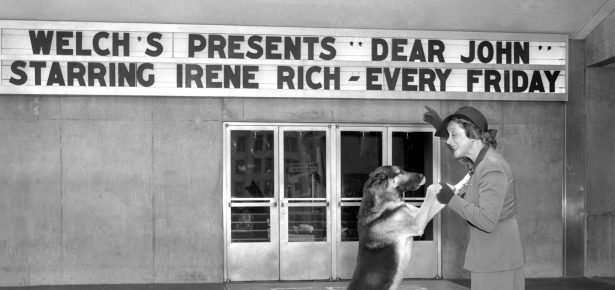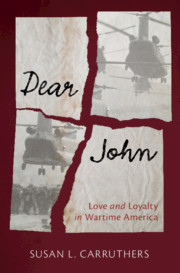
Consult any dictionary of slang and you’ll find a definition something like this: a letter sent to a man (usually in uniform) by his girlfriend, fiancée or wife announcing the end of their relationship. Urban legend adds a further twist. A Dear John doesn’t just sever an unwanted romantic connection. It announces that the sender has replaced the recipient with a new love interest: the anguish of abandonment compounded with the trauma of betrayal.
Since GIs coined the phrase during World War II, the Dear John has been a staple of US military lore and popular culture alike. Strikingly, though, this totem of male emotional injury figures almost nowhere in studies of wartime intimacy. And bona fide specimens are even harder to find in the archives than in secondary literature. Historians have seemingly accepted at face value a handful of oft-cited Dear Johns, like the note received by one GI, “Ahmed S.”, in which his ex- informed him she’d taken up with a sailor in his absence. Being “broad-minded,” however, her new partner wouldn’t object to her still writing Ahmed once in a while.
Did “Mrs. S.” ever pen such a letter? Was there, in fact, a “Mrs. S.”? Or, for that matter, a sanguine sailor? We just don’t know. This note entered circulation thanks to Yank: The Army Weekly, to which its wounded recipient apparently submitted it. Like many other Dear Johns, this one smacks of the apocryphal: written with cavalier insensitivity, or calculated cruelty. Yank published other specimens, too, no doubt hoping to elicit men’s gasps of horror or mirth at the expense of faithless women.

Researching Dear John: Love and Loyalty in Wartime America, I realized that the dearth of archival Dear John letters wasn’t an evidentiary dead-end, but the key to understanding this ubiquitous, yet elusive, emblem of home front disloyalty. Rather than a female epistolary genre, the Dear John is better understood as a male oral tradition. Almost everything we know about women’s break-up notes comes from the stories men in uniform, veterans, and those ventriloquizing their viewpoints have had to say about how and why they’re written; what damage they inflict; and which recuperative or retaliatory strategies Dear Johns license.
Dictionary definitions fail to capture the tremendous elasticity of this phenomenon. Dear Johns have had multiple meanings and functions for Americans in successive wars from World War II to Afghanistan. Although there’s a long association between break-ups and break-downs, the Dear John hasn’t only been construed as a hazard to mental health, a figurative loaded gun. Sharing break-up notes– whether real ones or comic inventions– has solidified bonds between men in uniform. At times, Dear Johns have exonerated otherwise unacceptable behavior, from going AWOL to perpetrating atrocities. Sometimes a Dear John has functioned, quite literally, as a “get out of jail free” card.
My book explores the full gamut of what Dear Johns have meant to men and women in wartime– and at war with one another.
Susan L. Carruthers

Latest Comments
Have your say!